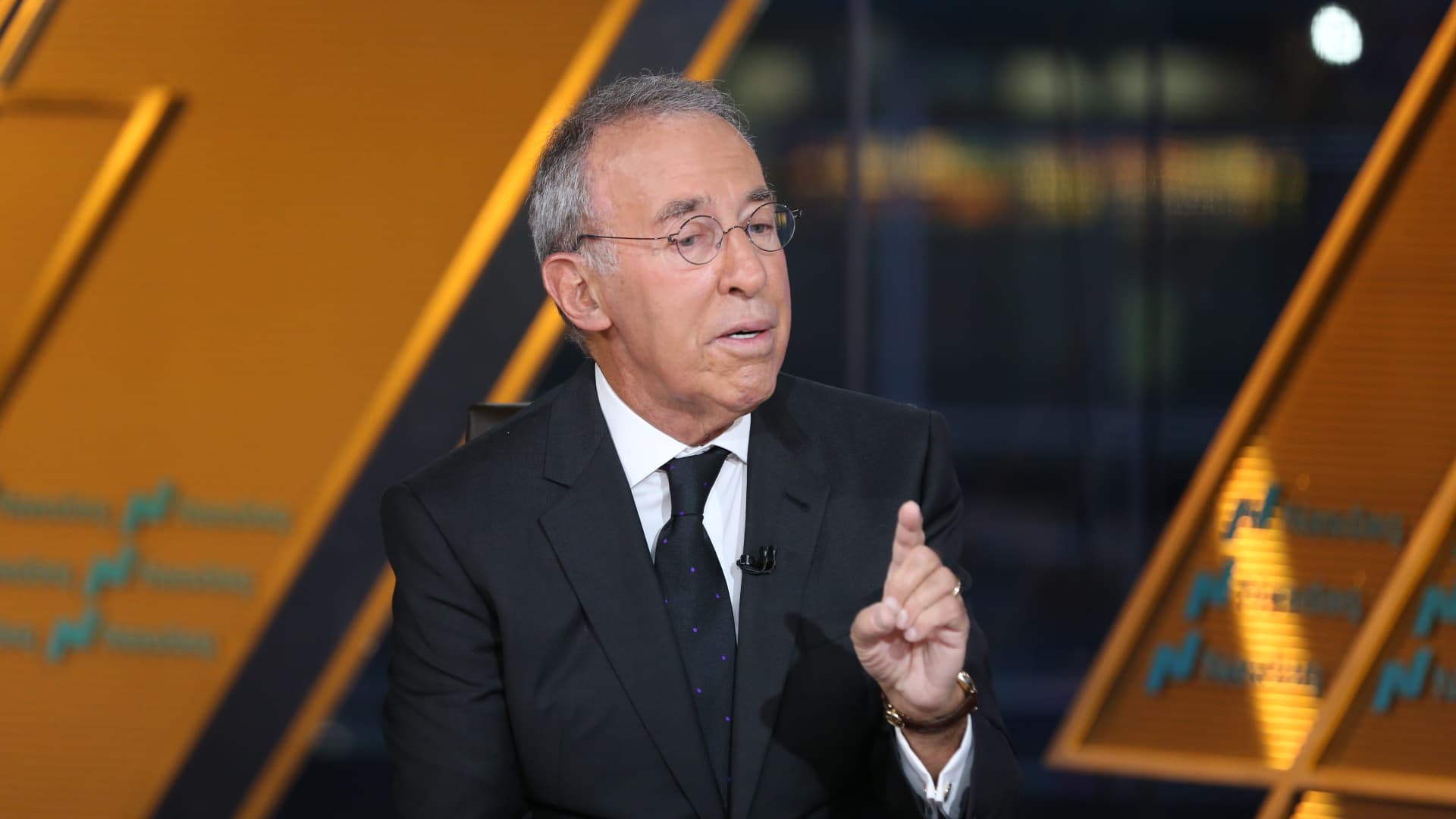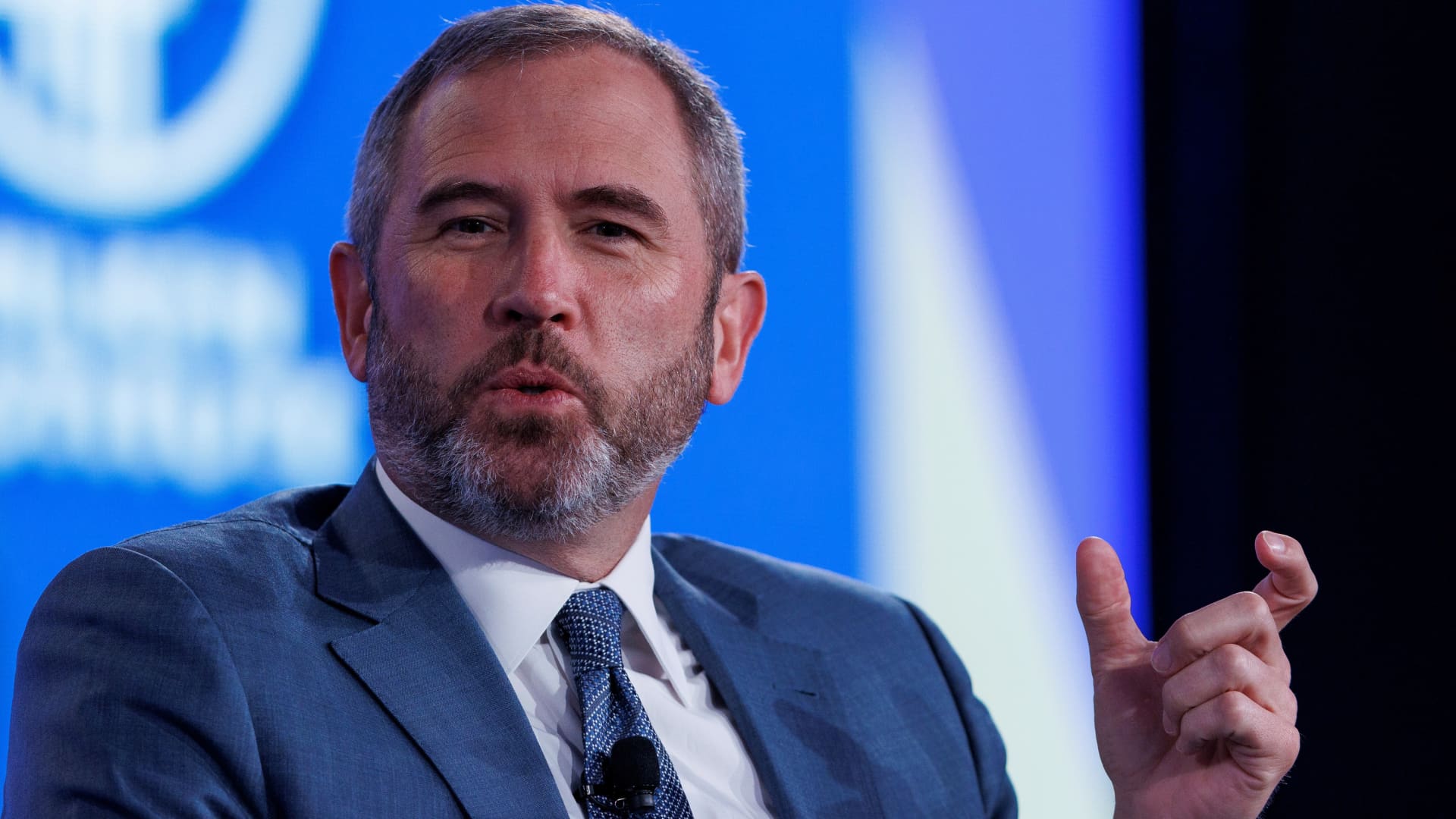Nvidia CEO Jensen Huang says AI is in a ‘virtuous cycle.’ Here’s what he means


NVIDIA CEO Jensen Huang speaks during the Live Keynote Pregame during the Nvidia GTC (GPU Technology Conference) in Washington, DC, on Oct. 28, 2025.
Jim Watson | AFP | Getty Images
Nvidia CEO Jensen Huang said on Friday that artificial intelligence had reached a “virtuous cycle,” tipping the industry for continuous growth.
Speaking at the APEC CEO Summit in South Korea, Huang said the vast improvements in AI models were leading to more investment in the technology, which was, in turn, improving the AI models even further.
“We have now achieved what is called the virtual cycle,” he said on stage at the event, wearing a suit rather than his usual black leather jacket.
“The AIs get better. More people use it. More people use it, it makes more profit, creates more factories, which allows us to create even better AIs, which allows more people to use it. The virtual cycle of AI has been designed, and this is … the reason why you’re seeing the world’s capex going so fast.”
His comments come as Big Tech is spending billions to build out AI-related infrastructure and serve its end users.
This year was expected to be a big one for AI spend with Meta, Amazon, Alphabet and Microsoft announcing plans to spend over $300 billion combined on AI technologies and datacenter buildouts. This looks set to continue into 2026 as the tech giants plan to boost spending again, per their respective earnings, reported this week.
Dan Ives, Wedbush Securities global head of technology research, described Nvidia as “the foundation of the AI Revolution” in comments to CNBC after Huang’s comments on stage.
He described the AI virtuous cycle as: “The more demand, the more building of AI building blocks. And demand creates more demand and capex.”
Huang stressed that profitability was at the heart of the current boom in AI capital investment.
“When something becomes profitable, you want to manufacture more of it, just like when you’re manufacturing chips and wafers and DRAM, if the manufacturing of those chips were profitable, you want to build more factories to create more chips,” he added.
A new era of computing
It is the beginning of a new era of computing, as, with AI, “every single layer of the computing stack is being fundamentally changed,” Huang said on stage.
We are at the beginning of a 10-year build-out of this new era, he added.
“AI runs on GPUs [graphics processing unit], whereas hand-coded software runs on CPUs [central processing unit]. This entire software stack, from the … the needs of energy, chips, the infrastructure, all of the software associated with the systems, the AI models and the applications on top, every single layer of computing has been fundamentally changed,” he said.
“Just think: the computer industry has been largely the same for 60 years, and now, with AI and accelerated computing, every single layer of the computing stack is being changed. All of the computers we’ve created in the past, a trillion dollars, maybe more, of computers needs to now be transitioned, shifted to the new computing platform,” he added.
Nvidia, which became the first company to surpass $5 trillion in market value earlier this week, announced a partnership with Korean semiconductor giant Samsung earlier on Friday. Samsung plans to buy and deploy a cluster of 50,000 Nvidia GPUs to improve its chip manufacturing for mobile devices and robots.
Huang painted a picture of the future in which AI is able to “work,” rather than just be used as a tool. Highlighting the rise of fully automated manufacturing factories, the CEO expects AI to reshape $100 trillion worth of industries around the world.
— CNBC’s Kif Leswing contributed to this report.









